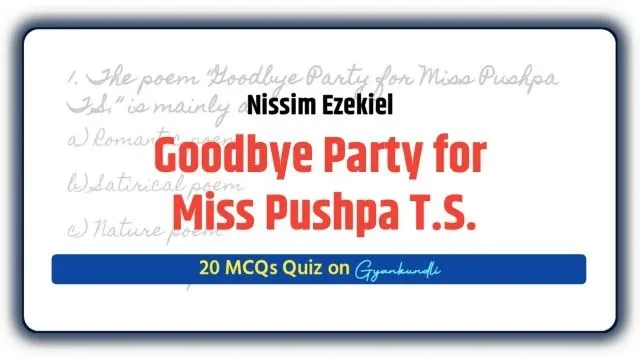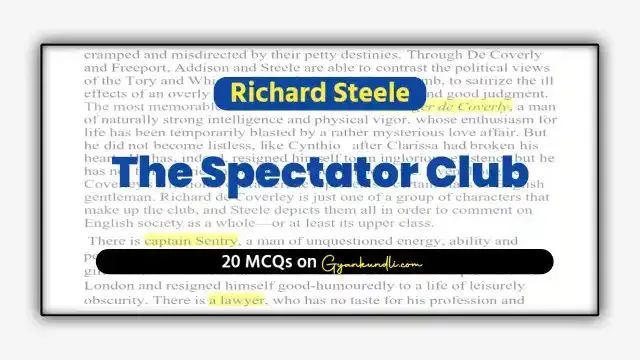On His Blindness by John Milton
John Milton, the famous English poet, is known not only for his epic works like “Paradise Lost” but also for his moving sonnets. “On His Blindness,” also known as “Sonnet 19,” is one of his most famous sonnets.
In “On His Blindness,” Milton reflects on his own experience of going blind later in life and bemoans the limitations this affliction places on his ability to serve God. The sonnet begins with the famous line, “When I consider how my light is spent,” highlighting his initial despair over his loss of eye sight. Milton wonders whether his blindness has left him unable to fulfil his life’s purpose, which he believed was to serve God through his writing (poetry).
As the sonnet continues, Milton reaches a intense realization. He comes to understand that God does not demand active service from every individual but values sincere intentions and a humble acceptance of one’s circumstances. The turning point of the sonnet is in the lines, “They also serve who only stand and wait,” signifying that one can still serve God through patient endurance and inner faith, even in the face of difficulties.
“On His Blindness” is a powerful and deeply personal reflection on the themes of adversity, faith, and divine providence. It is a evidence of Milton’s ability to convey complex emotions and philosophical ideas in the concise and structured form of a sonnet. This sonnet, along with his other works, cements John Milton’s legacy as a master of English poetry and a thinker of profound depth.
About the poet : John Milton
John Milton (1608-1674) was a famous English poet and writer of the 17th century, best known for his epic poem “Paradise Lost.” He lived during a time of great political and religious disruption in England, and his works reflect the unstable period of the English Civil War and the subsequent Restoration.
Milton’s greatest work, “Paradise Lost” is a 10,565-line epic poem that explores the biblical story of the fall of man, recounting the rebellion of Satan and the dismissal of Adam and Eve from the Garden of Eden. This masterpiece is celebrated for its poetic grandeur, vivid imagery, and profound exploration of themes such as free will, disobedience, and the nature of evil. It remains a milestone of English literature and has had a deep influence on later writers and thinkers.
Another remarkable work by Milton is “Paradise Regained,” a sequel to “Paradise Lost,” in which he narrates the story of Christ’s temptation in the wilderness. This work is significantly shorter but still showcases Milton’s poetic skills and religious insights.
Milton was also a creative political writer and pamphleteer, advocating for religious and political freedom. His “Areopagitica” is a famous essay defending freedom of the press and opposing censorship.
In addition to these major works, Milton produced numerous sonnets, poems, and essays, often expressing his deeply held beliefs in individual liberty, human potential, and the power of reason. His writings reflect a complex, complex figure who grappled with the profound questions of his time.
John Milton’s contributions to literature and his role in advocating for important social and political ideas have solidified his place as one of the most celebrated poets in the English language.
Text of On His Blindness
When I consider how my light is spent,
Ere half my days, in this dark world and wide,
And that one Talent which is death to hide
Lodged with me useless, though my Soul more bent
To serve therewith my Maker, and present
My true account, lest he returning chide;
“Doth God exact day-labour, light denied?”
I fondly ask. But patience, to prevent
That murmur, soon replies, “God doth not need
Either man’s work or his own gifts; who best
Bear his mild yoke, they serve him best. His state
Is Kingly. Thousands at his bidding speed
And post o’er Land and Ocean without rest:
They also serve who only stand and wait.”
On His Blindness Theme
The theme of John Milton’s sonnet “On His Blindness” (also known as “Sonnet 19”) revolves around the acceptance of adversity, the limitations of human condition, and the relationship between service to God and personal circumstances. The central theme can be summarized as follows:
1. Acceptance of Adversity:
The poem begins with Milton expressing his despair and frustration at losing his eye sight, which he perceived as a significant impediment to his work and service to God. This initial theme of adversity and the challenges it presents is central to the sonnet.
2. The Limitations of Human Condition:
Milton grapples with the idea of how his blindness might hinder his ability to fulfil his purpose in life, which he believed was to serve God through his literary and scholarly pursuits. This theme highlights the limitations of the human condition and the sense of helplessness in the face of physical adversity.
3. Spiritual and Philosophical Reflection:
As the sonnet progresses, Milton arrives at a profound spiritual and philosophical insight. He realizes that God does not require every individual to actively serve in the same way. Rather, sincere intentions and a patient acceptance of one’s circumstances are also forms of service. This theme underscores the importance of inner faith and the acceptance of God’s will.
4. The Nature of Service:
The closing lines of the sonnet convey the idea that service to God is not solely about outward action but can also involve inward contemplation and submission to God’s divine plan. Milton’s understanding of the nature of service is a fundamental theme in this sonnet.
Overall, “On His Blindness” explores the themes of adversity, faith, and the relationship between human limitations and divine providence. It is a reflection on how one can find meaning and purpose in life despite physical limitations and setbacks.
On His Blindness Summary and Analysis
On His Blindness Summary:
“On His Blindness” is a sonnet by John Milton that explores the poet’s emotional and philosophical response to his own blindness. The poem begins with the speaker lamenting the loss of his sight, expressing his despair over how this might hinder his ability to serve God, whom he believes he is meant to serve through his writing and scholarship.
However, as the sonnet progresses, the speaker has a profound realization. He comes to understand that God does not demand active service from every individual but values sincere intentions and a humble acceptance of one’s circumstances. The turning point of the sonnet is captured in the lines, “They also serve who only stand and wait,” signifying that one can still serve God through patient endurance and inner faith, even in the face of adversity.
On His Blindness Analysis:
1. Emotional Depth:
“On His Blindness” is a deeply personal poem where Milton grapples with a profound sense of loss and despair. The emotional depth of the poem is palpable, allowing readers to connect with the speaker’s inner turmoil and his initial frustration at the limitations of his blindness.
2. Spiritual and Philosophical Insight:
The poem is not just a personal lament but also a reflection on profound spiritual and philosophical themes. Milton grapples with questions of divine providence, the nature of service to God, and the acceptance of one’s circumstances. The poem’s ultimate message is one of inner faith and the recognition that service can take different forms.
3. Structure and Form:
Milton’s use of the sonnet form, with its structured rhyme scheme and quatrains leading to a couplet, enhances the poem’s sense of order and balance. The structure also mirrors the speaker’s shift from despair to acceptance.
4. Rhetorical Devices:
The poem effectively uses rhetorical questions to convey the speaker’s initial doubts and concerns. The repetition of “Doth God exact…” in the first quatrain emphasizes the speaker’s inner turmoil. This rhetorical technique enhances the impact of the poem.
5. Universal Themes:
While deeply personal, the poem touches on universal themes of adversity, faith, and the human response to challenges. It resonates with readers from various backgrounds, making it enduring and relatable.
The sonnet’s turning point, marked by the famous line “They also serve who only stand and wait,” is a powerful moment that encapsulates the speaker’s transformation and the core message of the poem. It is a line that lingers in the reader’s mind.
“On His Blindness” is a masterful sonnet that combines personal experience with profound philosophical and spiritual insights. It serves as a testament to Milton’s ability to convey complex emotions and ideas within a structured and concise form, making it one of his most celebrated works.
Attempt the Quiz : On His Blindness by John Milton Quiz Part 1
Form, Meter and Rhyme Scheme of On His Blindness
“On His Blindness,” a sonnet by John Milton, follows a specific form, meter, and rhyme scheme:
On His Blindness Form:
“On His Blindness” is a Petrarchan or Italian sonnet, which consists of 14 lines. It is divided into an octave (the first eight lines) and a sestet (the final six lines). The shift in the poem’s focus and argument occurs between these two sections.
On His Blindness Meter:
The poem is written in iambic pentameter, which means each line consists of ten syllables, with alternating stressed and unstressed syllables. The iambic pentameter is the most common metrical pattern in English poetry and provides a sense of rhythm and regularity to the verse.
On His Blindness Rhyme Scheme:
The rhyme scheme in “On His Blindness” follows a distinct pattern. In the octave, the rhyme scheme is ABBAABBA, where the first and fourth lines rhyme with each other, and the second and third lines rhyme with each other. In the sestet, the rhyme scheme is CDECDE, with each rhyme sound carrying through each tercet (three-line stanza). This rhyme scheme is typical of Petrarchan sonnets.
Literary Devices in On His Blindness
John Milton’s “On His Blindness” employs several literary devices and figures of speech to convey its themes and emotions. Here are some of the notable ones:
1. Rhetorical Questions:
The poem begins with a series of rhetorical questions, such as “Doth God exact day-labour, light denied?” These questions serve to emphasize the speaker’s inner turmoil and initial doubts.
2. Personification
The poet uses personification in the 8th line concerning Patience. He capitalizes the ‘P’ in ‘Patience’ and gives Patience the human ability to speak.
3. Alliteration:
There is alliteration in the lines “Doth God exact day-labour, light denied?” where the repeated “d” and “l” sounds create a rhythm and emphasize the sense of duty.
4. Enjambment:
The poem uses enjambment, where lines flow into one another without a pause, contributing to a sense of continuity and progression in the narrative.
5. Metaphor:
The phrase “talents,” in the context of “talents three,” is a metaphor for the abilities or gifts bestowed by God. The notion of the talents represents the speaker’s sense of responsibility.
6. Symbolism:
The term “light” is not only a metaphor for eyesight but also symbolizes the speaker’s understanding, insight, and the ability to serve God through his work.
7. Irony:
There is a subtle irony in the poem’s resolution. The speaker initially despairs over his loss of sight, thinking it hinders his service to God. However, the ultimate message is that God values inner faith and acceptance, which is, in fact, a form of service.
[Source : Litcharts]
Our another article : Ode to the West Wind : Summary and Analysis
Discover more from Gyankundli
Subscribe to get the latest posts sent to your email.
















Bhut hi shandar question h sir be continuou….